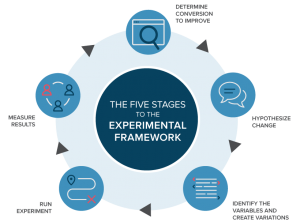
A big change has taken place in the beginning of this year – Google made Panda its core ranking algorithm. Because it was reported by people credible enough and claiming they got the news from Google itself, we had to believe them.
Among the sources who reported it, Barry Schwartz of Search Engine Land was one. Another was Jennifer Slegg of Thesempost. Gary Illyes validated what the latter wrote in her article and confirmed that he gave her tips.
What does Google baking in Panda as its core algorithm imply?
SEO providers are scared
They are scared for obvious reasons. Getting hit by Panda implies a site losing its ranking and all the hard work put behind it producing zero output. Panda recovery has been difficult so far because Panda was a separate algorithm. The timeline of Panda hitting a site and the impact on it were used as clues by the SEOs for recovery.
But because Panda is a part of Google’s core ranking algorithm now, marketers won’t know anything about its future updates. Panda may hit their sites and throw a wrench into their plans and they won’t have a clue how to recover from it.
Real-time update
There was a rumor that Panda will be made real-time by Google. Gary Illyes, however, made sure that Panda won’t be real time; this means Google won’t check a site’s content volume and quality in real time. The webmaster won’t receive any update from Google in real time either.
When Search Engine Land reported the Panda 4.2 release last July, Panda’s extreme slow nature was highlighted. Some webmasters mistakenly thought Panda to be real-time due to the slow rollout. But as Illyes has conveyed Google’s official statement, it’s clear that Panda will behave like a standard Google algorithm, giving webmasters no hint of Google is up to.
A regular update
Panda may not be real-time, but Illyes indicated it’d be regular. The following is what he said from a hangout session:
“It’s something where we try to look at the quality of the website and understand which ones are higher quality, which ones in general are lower quality and take that into account when ranking the site. This is essentially just a way of making those updates a little [bit] faster, a little bit more regular.”
This announcement can steal an SEO provider’s good nights sleep because Panda is already dreaded in the webmaster circle. If it becomes regular, then they will always feel Google is breathing down on their necks.
To understand Panda’s behavior (in the future), webmasters need observable patterns. The problem is there are not many of them. There are only a
Very few patterns
Searchmetrics collected data to analyze changes in Google’s search results and noticed that the top 100 websites have either had an improved visibility or negative change in their visibility after Google released a core ranking algorithm update, shortly before announcing Panda’s inclusion.
Two patterns observed by the analysts at Searchmetrics are:
- Use of brand keywords may invite penalty
- A searcher’s intent is the priority
Most importantly, Google is not sparing anyone this time. Some top content publishing websites like ArsTechnica.com, Economist.com and FastCompany.com have lost their ranking. The pages that got hit were mostly the old ones.
As for preferring searcher’s intent over content, here’s an excellent resource explaining how search queries are processed by Google that falls in line with Searchmetrics’s findings.
The dodging weapon
Both patterns point at the same thing – content quality. Quality content is the only weapon that can help a marketer dodge a penalty from Google. Following quality content guidelines keeping the patterns mentioned above in the hindsight is not difficult at all.
For a marketer (especially a B2B marketer), writing lengthy content is somewhat imperative because studies have found that articles that are more than 1000 words long are read by a large number of readers and get plenty of shares on social channels; both qualify as yardsticks using which Google determines content quality.
Adding images (relevant), graphs and pie charts to the article helps. Images and graphs give the feel that the article is well-researched. The content must be opinionated. If the author doesn’t share his opinion, his analysis, no matter how in-depth the rest of the content, it will not impress the readers. An opinion, at the end of an analysis is like dessert after a meal.
Do experiment
The best thing about content is it gives you ample opportunities to experiment.
You should experiment, of course, by the book and see the changes in ranking for your site.
If the changes are for better results, turn them into rules-to-be-followed. Such an approach helps to devise customized content strategies.
Image Courtesy: pixabay.com
Digital & Social Articles on Business 2 Community(31)








